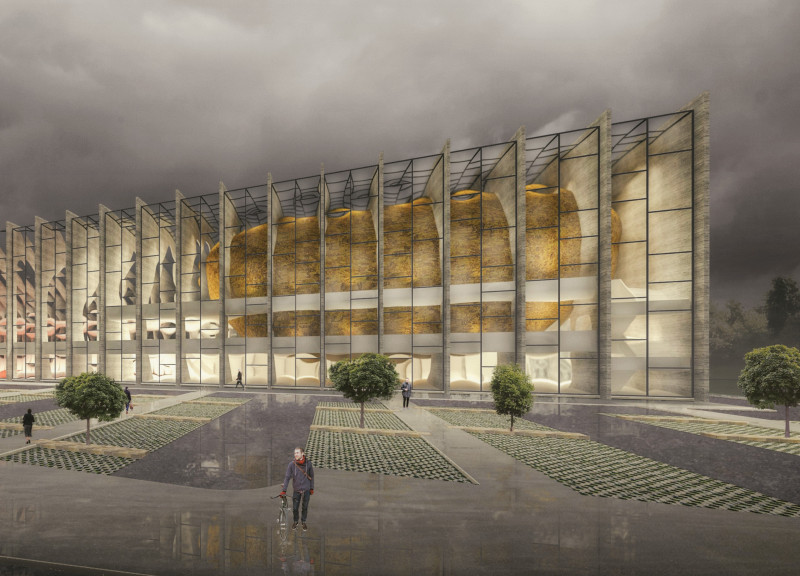5 key facts about this project
Re-Frame is located in Riga, Latvia, where it serves to bring together different parts of the Riga International Exhibition Center. The design is rooted in a concept that connects the city's rich history with present-day requirements. By incorporating historical references and contemporary architectural solutions, Re-Frame creates a unified identity for the exhibition space.
External Covering and Structure
The design features external covering panels made from thermoplastic ETFE, which act as a lightweight thermal barrier. The inflated panels provide insulation while allowing natural light into the building. This choice not only makes the interior brighter but also creates a sense of openness. Supporting this design is a tubular steel frame, which ensures the building's stability and allows for flexibility in the façade and interior layout.
Spatial Arrangement
Inside, the layout is designed to encourage movement and interaction. Clear pathways connect different functional areas, including space for exhibitions and public gathering. This configuration supports a variety of events while enhancing the experience for visitors. By being adaptable, the design can meet the changing needs of the community over time.
Green Integration
The inclusion of green areas within the design adds an important environmental aspect. These landscaped sections not only improve the visual appeal but also contribute to air quality and temperature control. This commitment to sustainability aligns with current architectural trends that emphasize the importance of green spaces in urban settings.
Parking and Accessibility
Accessibility is thoughtfully addressed with a multilevel parking structure that can accommodate many vehicles. This feature enhances visitor convenience and fits well within the surrounding urban environment. It helps position the exhibition center as a key location for trade and community interactions.
The Re-Frame design showcases the interplay between the ETFE panels and the structural frame, creating a façade that changes with the light. This quality offers a unique visual experience throughout the day, highlighting the building's connection to its environment.


























